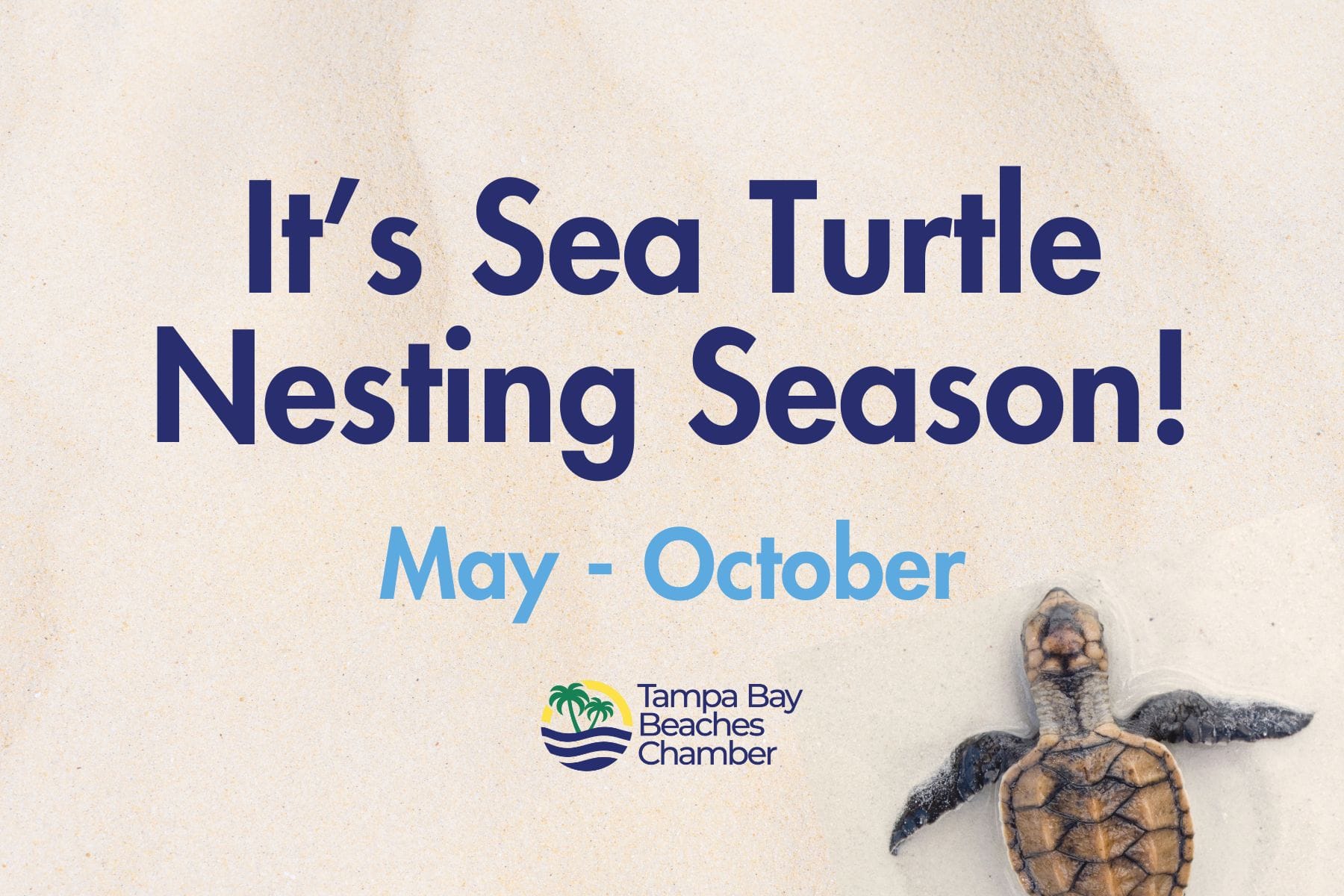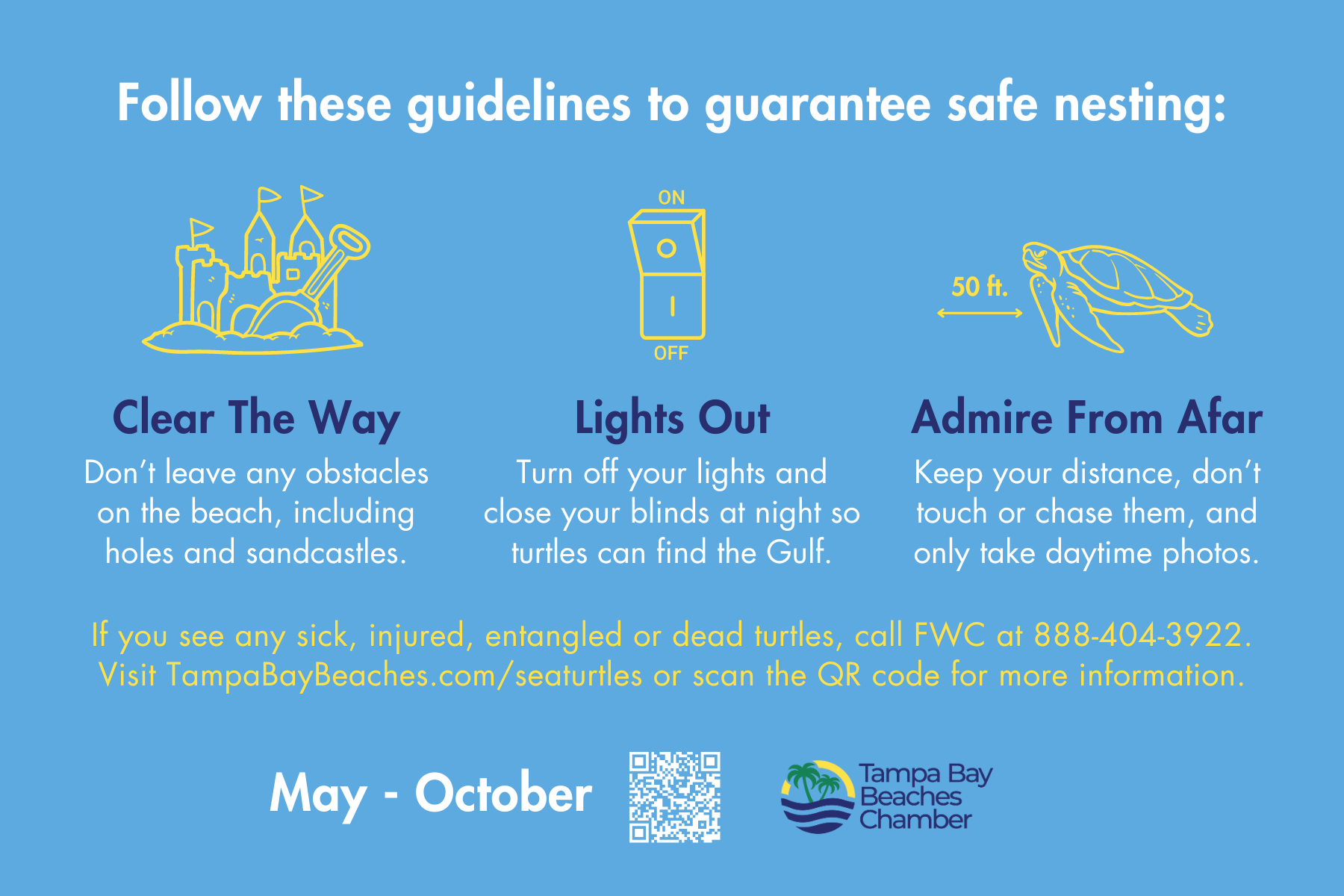Help Us Guarantee Safe Sea Turtle Nesting
Residents and visitors can play a big part in helping to protect vulnerable nesting sea turtles this spring and summer while visiting Florida’s coastal habitats. Beachgoers can have a significant impact on their nesting success by following these guidelines:
If you see any sick, injured, entangled or dead turtles, call FWC's Wildlife Alert Hotline at 888-404-3922.


Clear The Way: Female sea turtles expend large amounts of energy crawling out of the surf and far enough up the sand in order to dig and lay nests in spots that are less vulnerable to the tides. Obstacles on the beach can entrap and prevent them from nesting as they crawl across the sand to lay their eggs. Trash, holes in the sand and other obstacles can also prevent sea turtle hatchlings from reaching the water once they emerge from their nests. Food scraps attract predators, such as raccoons and crows, that prey on sea turtle hatchlings, and litter on beaches can entangle sea turtles, birds and other wildlife.
Lights Out: Any lighting can misdirect and disturb nesting sea turtles and their hatchlings, leading them away from the gulf and toward potential danger. To prevent this, beachgoers should use natural starlight to see when on the beach at night and avoid using flashlights or cellphones. Anyone living along or visiting Florida beaches can do their part by putting porch, parking or deck lights out and closing curtains after dark to avoid disorienting nesting and hatchling sea turtles on the beach.
Admire From Afar: While it can be exciting to witness sea turtles on the beach, getting too close (50 feet or less) to nesting sea turtles can cause them to leave the beach before they complete the nesting process. If an animal changes their behavior, you’re likely too close. Remember – it is illegal to harm or disturb nesting sea turtles, their nests and eggs, or to pick up hatchlings.
More Resources:
- Florida Fish & Wildlife for info about their Sea Turtle Program
- Clearwater Marine Aquarium for info about their Sea Turtle Conservation
- Clearwater Marine Aquarium for all of this information in a cute video
- Sea Turtle Trackers for more info about how you can help
